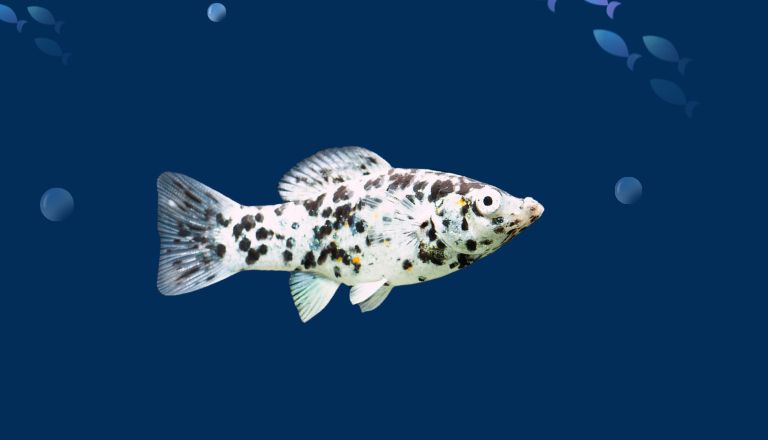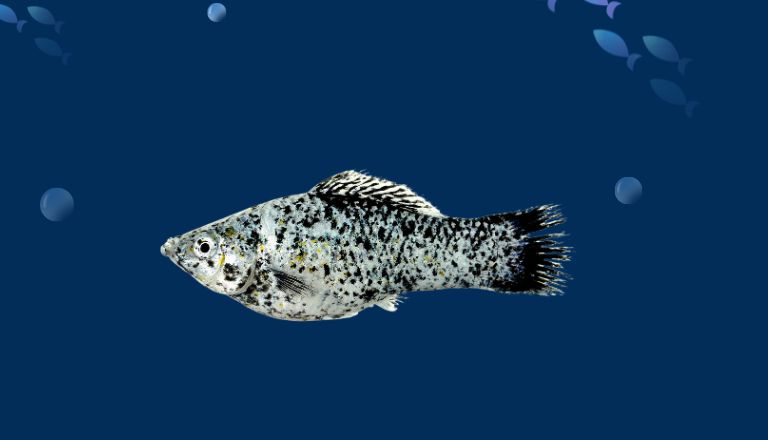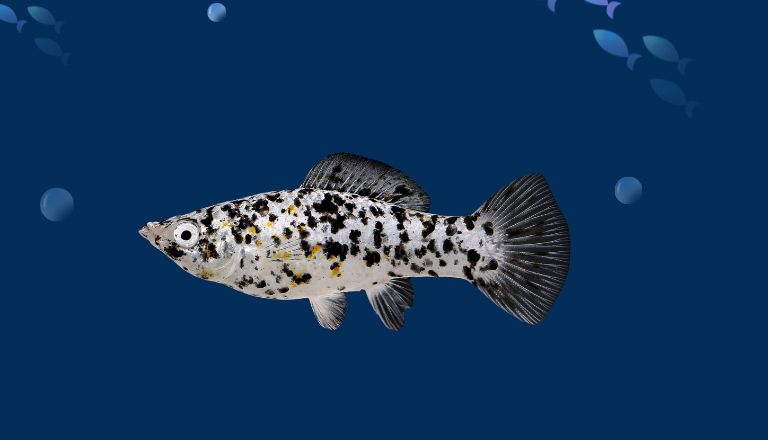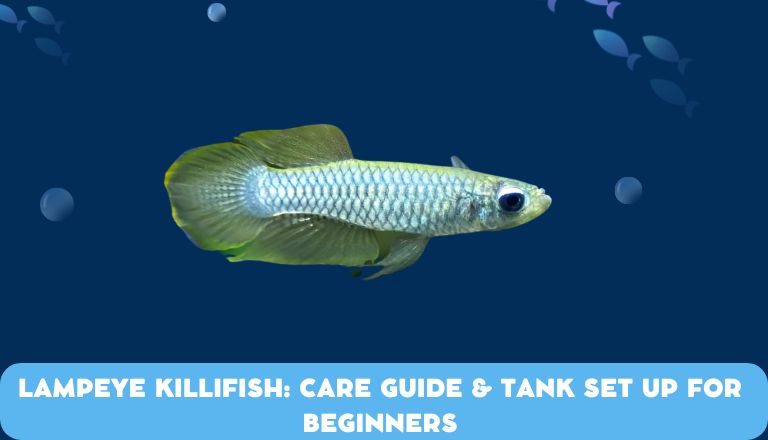Dalmatian Molly Care Guide & Species Profile
Dalmatian Molly fish have black and white spots like Dalmatian dogs. They are popular among aquarium enthusiasts for their elegant look. These freshwater fish are easy to care for, making them a good choice for both new and experienced fish keepers. This guide will cover everything about Dalmatian Mollies, including their origin, habitat, tank setup, diet, and breeding behavior. If you want to learn how to care for Dalmatian Mollies, keep reading!
Dalmatian Molly Facts & Overview
Dalmatian molly is scientifically known as Poecilia latipinna. These fish are primarily found in freshwater bodies across North and Central America.
They reach a size of around 2-4 inches in length, they require a minimum tank size of 30 gallons to thrive. They have an average lifespan of 3-5 years with proper care and suitable tank conditions.
They are omnivorous by nature, their diet consists of high-quality flake food along with live or frozen treats like bloodworms and brine shrimp.

Dalmatian mollies make an excellent choice for both beginner and experienced aquarists due to their stunning appearance and easy care requirements.
Origin
Dalmatian Mollies originate from Central America and are a captivating species of fish that have been popular in home aquariums for decades. These fish thrive in both freshwater and brackish environments, showcasing their adaptability.
Researchers believe Dalmatian Mollies came from Sailfin Mollies by selective breeding. Dalmatian Mollies are popular among fish keepers for their beauty and friendly nature in community tanks.
Dalmatian Molly Lifespan And Size
These vibrant and active fish can grow up to 4 inches in length, making them a striking addition to any aquarium. Their elongated bodies and flowing fins create a graceful presence in the water.

Dalmatian Mollies have an average life of 3-5 years when kept in good water conditions. Provide a well-maintained tank with proper filtration, water quality, and a balanced diet to help extend their lifespan.
Availability
Dalmatian Mollies are available in most pet stores and online retailers. They are easily accessible to hobbyists of all levels. These beautiful fish can be found in varying colors and combinations.
Dalmatian Mollies adapt well to different water conditions. It makes them versatile for both beginner and experienced aquarists.
Appearance and Behavior
The Dalmatian Molly is a striking fish known for its unique appearance and lively behavior. With its distinctive spotted black and white pattern, this species stands out in any aquarium. The fins of the Dalmatian Molly are elegant and flow gracefully as it swims through the water, adding to the overall beauty of this fish.

The combination of vibrant colors, intricate patterns, and interesting behavioral traits make the Dalmatian Molly a fascinating species to observe in any aquarium.
Colors, Patterns, Fins, and Sex Differences
Dalmatian molly fish have striking colors and patterns, with black spots reminiscent of the famous dog breed. These spots can vary in size and distribution. It creates a unique and eye-catching appearance. Some Dalmatian molly exhibit gold or silver hues in combination with the black spots.
Male Dalmatian mollies have more elaborate fins compared to females. Males boast longer and more colorful fins, which they use to display dominance and attract mates. Female Dalmatian mollies have smaller and less intricate fins.
Behavior
Dalmatian molly fish are known for their active and social behavior. These lively fish thrive in community tanks. Despite their small size, Dalmatian molly fish have a bold personality. Sometimes it exhibits territorial behaviors when establishing its space within the tank.
Male Dalmatian mollies perform dances and displays to attract females. This elaborate courtship behavior adds a fascinating dynamic to any aquarium setting.
The engaging behaviors of Dalmatian mollies make them a delightful addition to any freshwater tank.
Dalmatian Molly Care and Tank Requirements
Dalmatian Molly fish are a lively and vibrant species that require special care to thrive in an aquarium. Dalmatian Mollies prefer tanks with plenty of room to swim freely. They are social creatures that thrive in groups.

Providing a stress-free environment contributes to the overall well-being of these colorful freshwater fish.
Habitat and Tank Requirements
Dalmatian Mollies thrive in groups and require ample swimming space. Dalmatian Mollies prefer slightly alkaline water. Add dense vegetation and floating plants to provide hiding spots for shy individuals. It also serves as a grazing areas for these herbivorous fish.
Adding live plants such as Java Moss or Hornwort maintains water quality by absorbing excess nutrients produced by the fish.
Add decorations like caves or driftwood to mimic their natural habitat in slow-moving rivers and estuaries. Monitor water quality regularly, as these fish are sensitive to high levels of ammonia and nitrates.
By recreating a suitable environment with proper tank size, water conditions, and hiding places, you can ensure that your Dalmatian Mollies thrive in captivity and display their vibrant colors to their fullest potential.
Tank Conditions
These colorful freshwater fish like slightly alkaline water with a pH level between 7.0 and 8.5. Keep the water temperature around 72-82°F.
Regularly test the water and change the water to keep their environment pristine. As they are sensitive to high ammonia and nitrate levels.
A tank size of at least 20 gallons is recommended to provide enough space for these active swimmers to explore. Choose fine gravel or sand as it mimics the sandy bottoms they enjoy in the wild.
Common Diseases
One of the most prevalent issues is Ich, also known as white spot disease. This parasitic infection presents as small white spots on the fish’s body and fins. It leads to irritation and potential lethargy.
Another concerning ailment that Dalmatian Molly fish face is fin rot. It is caused by bacteria entering through cuts or wounds in their fins. This condition manifests as frayed or deteriorating fin tissue.
Maintain optimal water conditions and ensure a stress-free environment to prevent disease and promote overall fish health.
Dalmatian Molly Tank Mates
When choosing tank mates for Dalmatian mollies, consider their peaceful nature and preference for community living. Good companions include Platies, Swordtails, and Guppies. These fish share similar water parameter requirements and can coexist harmoniously in the same tank.
Add calm bottom-dwellers like Corydoras catfish or small schooling fish like Neon tetras to create a balanced and serene aquarium environment.
Avoid adding aggressive or fin-nipping species like Bettas or Tiger barbs. These fish may stress out the mollies and cause conflicts in the tank.
Diet and Feeding
These fish are omnivores. They require a variety of diets consisting of both plant and animal matter. Give them good quality flake or pellet food specifically designed for livebearers.
Supplement their meals with live or frozen foods such as bloodworms, brine shrimp, or daphnia to provide essential nutrients and keep them stimulated.
Avoid overfeeding Dalmatian Mollies, as this can lead to health problems such as obesity and water quality issues in the aquarium. Feed them small portions multiple times a day rather than one large feeding.
A well-balanced diet is key to maintaining the overall well-being and coloration of these striking fish.
Breeding
Breeding these mollies can be a rewarding experience for aquarium enthusiasts. To breed Dalmatian mollies successfully, create an environment that mimics their natural habitat with plenty of plants, rocks, and hiding spots.
Control the ratio of males to females in the breeding tank. This can ensure successful reproduction while also preventing overcrowding.
Provide a varied diet rich in live foods such as brine shrimp and bloodworms to enhance the breeding process by promoting overall health and vitality in both parent fish and offspring.
Conclusion
Dalmatian mollies are popular freshwater fish known for their striking appearance and peaceful nature. By providing them with a well-maintained tank, appropriate diet, and suitable water conditions, you can ensure the health and happiness of these beautiful fish. With proper knowledge and dedication, you can create a thriving environment for your Dalmatian mollies to flourish.
FAQs
How Many Dalmation Mollies Should Be Kept Together?
Keep a small group of 3-4 Dalmatian mollies in a 10-gallon tank to thrive comfortably. These fish are known to be social and do well in groups. Keeping them in a small school can reduce stress and promote natural behaviors.
What Size Tank Does A Dalmatian Molly Need?
A Dalmatian molly requires a tank size of at least 10 gallons to thrive comfortably. These fish are active swimmers and need ample space to move around freely. A larger tank, such as a 20-gallon tank, would be even better as it provides more swimming space and helps maintain stable water parameters.
How Big Do Dalmation Mollies Get?
Dalmatian mollies grow to be around 2-4 inches in length. The size of a Dalmatian molly can vary depending on factors such as diet, water quality, and tank size. Male Dalmatian mollies tend to be slightly smaller than females.
What Do Dalmatian Mollies Eat?
Dalmatian mollies are omnivorous fish that require a varied diet to thrive. In their natural habitat, they eat algae, small invertebrates, and plant matter. In a home aquarium, provide them with a balanced diet that includes high-quality flake or pellet food specifically formulated for mollies.







